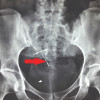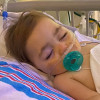
 IJCP Editorial Team
IJCP Editorial Team
EUS-guided Vascular Therapy
Visceral artery aneurysms are often asymptomatic and are incidental fi ndings on CT and MRI. Mortality from their rupture ranges from 25% to 100%.
Indications of treatment of true aneurysms include size >2 cm irrespective of anatomical site, symptomatic patients and increasing size of the aneurysm, size <2 cm in women who wish to become pregnant and patients who require liver transplant.
All false aneurysms should be treated, irrespective of their size or location.
Complications of endovascular treatment are technical failure to catheterize the artery, arterial thrombosis/embolism, coil migration, aneurysm recurrence, hematoma or pseudoaneurysm at the puncture site and abdominal pain, fever (post-embolization syndrome).
The role of endoscopic ultrasound (EUS) in vascular therapy is still evolving.
EUS-guided therapy has high technical and clinical success rates with no signifi cant adverse events. It is effective and less invasive than surgery/percutaneous options.
It is a day care procedure and does not require general anesthesia and can be done in conscious sedation. It permits precise targeting of aneurysm and precise injection. Less expensive than radiological treatment and can be repeated safely. A multicenter study is needed to further establish its role.
Despite technical success, there are limitations of a small number of enrolled subjects and poor methodology, varied procedural techniques and lack of large randomized controlled trials.
Indications should be clearly stated and patients carefully selected. Radiological and surgical back up is a must.

IJCP Editorial Team
Comprising seasoned professionals and experts from the medical field, the IJCP editorial team is dedicated to delivering timely and accurate content and thriving to provide attention-grabbing information for the readers. What sets them apart are their diverse expertise, spanning academia, research, and clinical practice, and their dedication to upholding the highest standards of quality and integrity. With a wealth of experience and a commitment to excellence, the IJCP editorial team strives to provide valuable perspectives, the latest trends, and in-depth analyses across various medical domains, all in a way that keeps you interested and engaged.














Please login to comment on this article